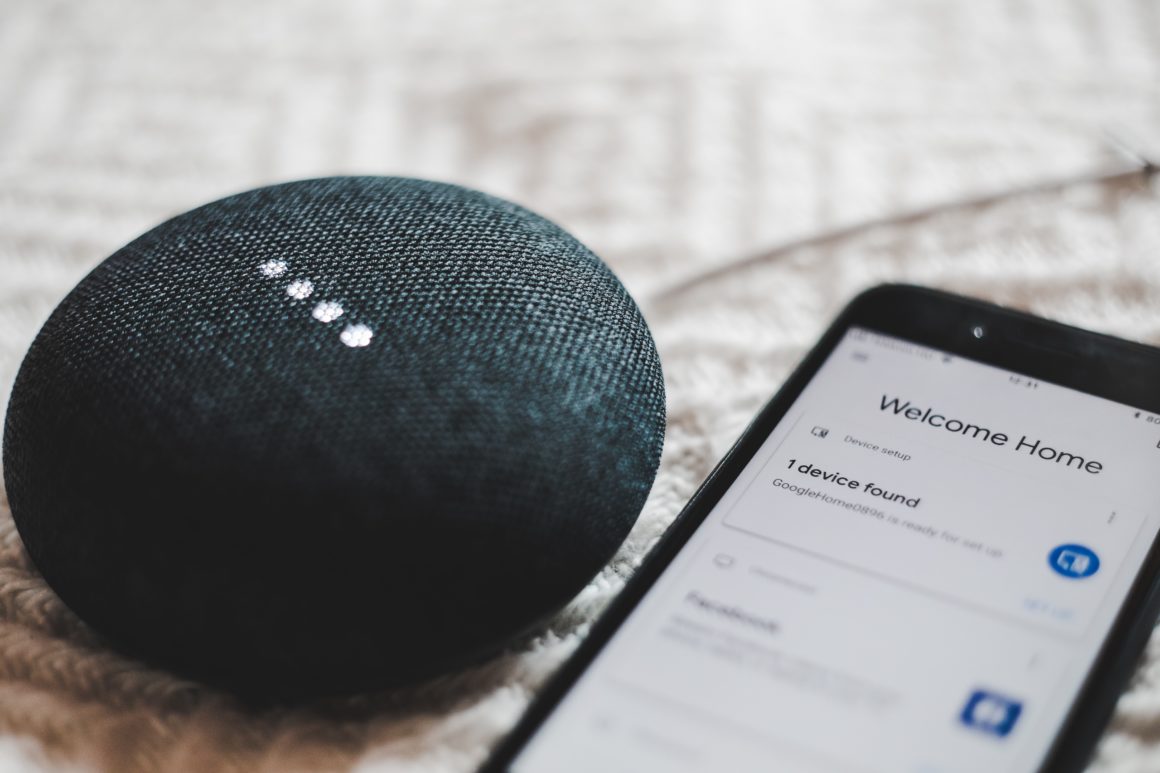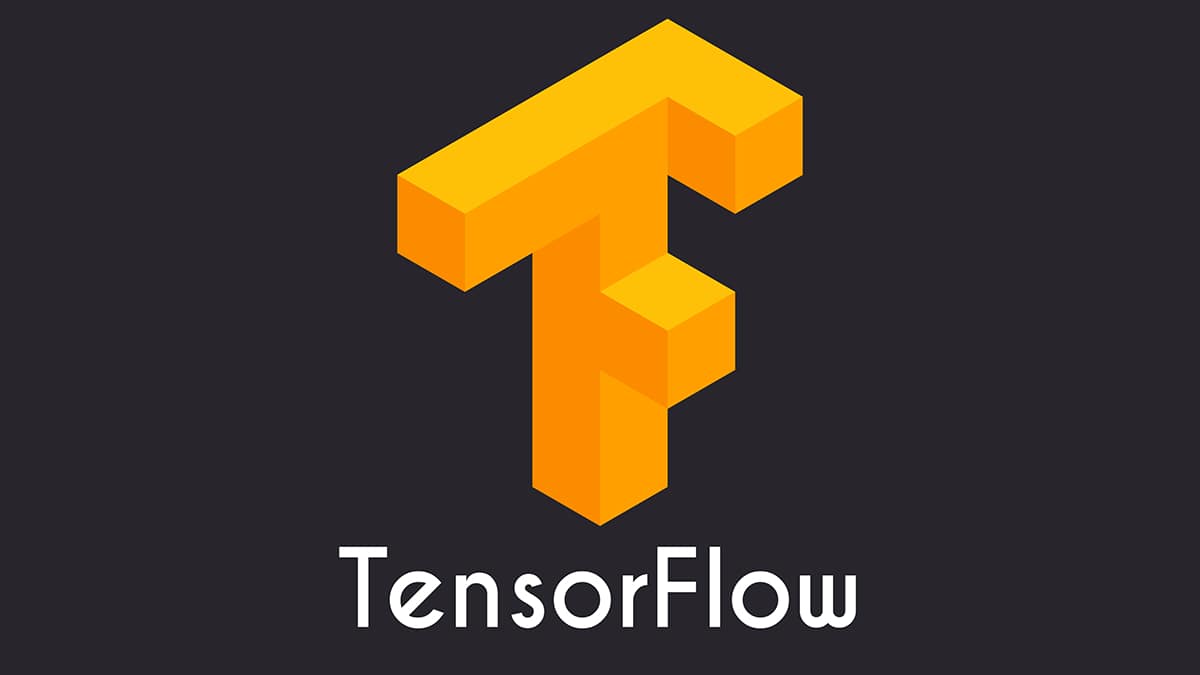In our previous blog, we demystified what artificial intelligence (AI) can and cannot do for your business — and what you should expect and prepare when developing an AI project. Here, we go a step further and explore conversational AI — more specifically, chatbots. They seem to be a must-have for businesses these days. In fact, a recent Gartner survey reported that chief information officers (CIOs) cited chatbots as the primary AI-based application used in their organizations, noting their capabilities to automate and streamline internal workflows.
But do you really need one?
Whether you’re a startup founder or an enterprise executive, you may feel entangled by the AI hype on one hand, and the anxiety that your chatbot will drive your customers (or employees) away. Here we demystify some of the myths, answer frequently (un)asked questions, and what you — as a decision maker — should take into consideration before developing an AI chatbot.

Do all chatbots use AI?
Not all chatbots use AI. Chatbots can be rule- or script-based (i.e., follow a decision tree), generate texts and dialogue patterns, a little of both, or powered by AI. You can create chatbots without using AI if you’re building a chatbot that’s only designed to provide a predefined set of information.
Rule- or task-based chatbots focus on accomplishing specific goals. These generate automated and seemingly conversational responses. Interactions with these chatbots are structured and specific — i.e., interactive FAQs. They can handle common queries and simple transactions that don’t require a lot of variables. They may or may not use natural language processing (NLP), though some chatbots use NLP to simulate conversations.
At the core of AI chatbots is NLP. This technology plays a vital role in matching user inputs to the correct “intent” in order to deliver an appropriate output. The NLP engine interprets what your users say and converts them into inputs that the system can then process. NLP is not exclusively tied to chatbots — it is tightly coupled with AI projects that involve speech/voice, text, and character recognition.
Data-driven and conversational chatbots — which many call virtual or digital assistants — are more interactive and personalized than task- or rule-based chatbots. These chatbots are more contextually aware and use natural language processing (NLP), natural-language understanding (NLU), and machine learning to improve.
AI chatbots apply predictive intelligence and analytics to be able to personalize their interactions with a human end user based on their profile or past behaviors. They learn the users’ preferences over time, enabling them to provide recommendations and even anticipate their needs. Siri and Alexa are customer-facing examples of these chatbots. They can be standalone apps, but in many cases, these AI-powered chatbots can connect various single- or rule-based chatbots under one banner and pull information from each of them. They can then combine this disparate information to accomplish a task.
For the purposes of this FAQ, we’ll stick to AI-powered chatbots.
Does my business really need an AI chatbot? What are the benefits?
It depends on your use case. AI chatbots can sift through massive amounts of data to analyze sentiments and identify complaints and reviews across different touchpoints. It can learn and adapt to user preferences, allowing you to deliver personalized content.
Here are some advantages and use cases that AI chatbots can bring:
More personalized customer experience. AI chatbots can remember, learn, and adapt to user preferences, enabling you to deliver personalized content. Marriot International, for example, uses its ChatBotlr, to help guests book hotels, access reward/loyalty programs, and even request services like wake-up calls. AustralianSuper, the country’s largest pension and investment fund, uses an AI-powered chatbot ‘Ash’ that achieved a 92% overall customer satisfaction rate, helping customers with frequently asked questions. National Australia Bank (NAB) launched a 24/7 chatbot designed to answer over 200 common banking questions (with 13,000 variations). Even the Sydney Opera House has its ‘Seal Bot’ that offers patrons information on upcoming events.
Help with the buyer journey. AI chatbots can complement sales activities and enable transactions. It can help minimize waiting times, foil customer hesitation (i.e., abandoned shopping carts), and offer personalized recommendations. In fact, surveyed business executives in the U.S. reported that their sales increased by 67%, with 26% of all their sales starting with a chatbot interaction. Another example is Kia, which has more than 800 disparate websites where potential customers can go to for information. Kia deployed Kian, serving as a consolidated source of information. Four months since Kian launched, Kia (U.S.) had three times more conversions (21%) than its main website (7%).
Automate and streamline operations, and reduce cost. They provide additional value by automating mundane tasks and manage incoming queries, particularly if you have busy customer traffic. AI-powered chatbots and NLP are projected to provide cost savings of US$8 billion per year by 2022, with banks, healthcare facilities, retail, and e-commerce industries benefiting the most. In the U.S., chatbots are pegged to save customer service costs by up to 30%. Open Universities Australia (OUA), too, launched an AI chatbot to complement its call center operations, helping students with their queries 24/7. It was integrated with a customer relationship management (CRM) system to automate lead generation and increase sales.
Let’s have an e-commerce company as an example. An AI chatbot can have these use cases:
- Automate in-app customer support, which include providing instant or real-time response to product information and technical support inquiries
- Drive sales by acting as a frontliner to customer inquiries
- Help with lead generation by segmenting your users (via sales-oriented qualifying questionnaires)
- Provide billing/pricing information as well as quotes and estimates
- Improve user retention by handling complaints and customer service issues in a timely manner
- Handle and track inventories, orders, shipping, and deliveries
- Process payments, returns, refunds, and exchange requests
- Schedule appointments or make product reservations 24×7
- Collect feedback from customers
- Keep customers by through personalized product recommendations
Another case would be for banking. In fact, there’s already a real-life example: Bank of America’s virtual assistant, Erica, which currently has over 12.2 million users. Erica provides credit score reports and updates, helps with bill payments, monitors charges and balances, notifies customers of reward programs, and provides a snapshot of the customer’s monthly spending.
Can I replace my human staff with an AI chatbot? What are the limitations?
While AI chatbots are a boon, they’re not meant to replace humans, but designed to complement them. For example, human staff can take the reins when the chatbot can no longer handle difficult conversations. Here are some caveats and drawbacks that you should consider:
AI chatbots depend on data. Any language-based system requires humans to create rules and responses, and conversational AI is no exception. A machine learning system needs humans to collect, label, and clean training data. Vocabulary and relationships and subtleties of words and sentences, which naturally come to humans, must be “learned” by the machine. It’s no surprise that eight out of 10 enterprises noted the volume and quality of data as the main hurdles for adopting AI and machine learning. This can be problematic especially for companies that don’t have data readily available.
Your AI chatbot can only be as good as the data you feed it. You’re probably aware of Tay’s infamous mishaps (Microsoft’s AI chatbot released via Twitter). AI chatbots aren’t foolproof: They can seemingly have a mind of their own — they can end up delivering inappropriate responses, displaying bias, or going off script, and ultimately become more of a liability than asset to your business.
AI chatbots need significant time and resources and require maintenance. While some costs can be offset by using pre-trained models, it can cost money and resources to build, rebuild, maintain, and repair or improve your AI chatbot, not to mention support it in multiple platforms or devices.
AI chatbots are still limited in understanding the nuances of human conversations. While AI chatbots have low error response rates, they are limited in understanding human emotion, behavior, intent, and context. Unlike humans who can intuitively grasp the subtleties of language, AI has not yet made strides in NLU the same way it had in other areas. It involves interconnected layers of knowledge that humans learn and apply instinctively in conversations. In fact, data scientists and AI experts are still experimenting with machine learning techniques to improve how context can be embedded in conversational AI.
That said, this can be a drawback from a business perspective. Your users can personify your chatbot, and their expectations can lead to frustration when, for example, their conversation runs in circles. And because AI chatbots rely on amalgamated fragments or patterns of words, phrases, and sentences from its datasets, it is difficult to configure them in a way that can consistently demonstrate your brand’s unique identity or personality.

Like this article? Subscribe to our blog for more of Oursky’s expert advice:
What should I consider before developing an AI chatbot?
AI chatbots benefit service-heavy companies that field a high volume of customer inquiries (e.g., FinTech, banking, retail, telecommunications, travel). If your business is exploring to add an AI chatbot, take these into consideration:
- Define your use case. Set realistic expectations and identify what purpose the chatbot must fulfill. Many businesses rush to create chatbot projects but fail to address their needs — it’s no wonder that 40% of virtual assistant apps launched in 2018 are expected to be abandoned this year.
- Define your audience and persona. For whom is the chatbot for? Will they be your customers? Employees? What are their demographics, and are they open to talking to chatbots? What are their problems, and how can the AI chatbot help solve them?
- Where do you want to put the chatbot? Many companies would create multiple or separate chatbots across different devices and platforms, such as in social media (like Facebook Messenger, Slack, or WhatsApp) or their own websites. Some create a sole chatbot that incorporates a multichannel strategy.
- Map out how the conversations will flow. Define the questions that the chatbot will answer. For example, booking a flight, reserving a restaurant, and booking a hotel each have their own dialogue flows. With these flows, outline the possible interactions with the user. Enable users to provide feedback to answers provided. Determine if you have sources you can get information from (e.g., website FAQs, internal documents, or manuals, etc.). Create different variations of questions to train the chatbot to better generalize and understand the language.
Once you’ve pinned these down, you can start working out what technical approach to use and your delivery channels.
Are there platforms readily available for me to build my AI chatbot? Can I build my own?
You can build your chatbot using available frameworks, such as TensorFlow and NLP implementations like natural language toolkit (NLTK) or NLPTK and customize the components. You can also employ existing platforms like Google’s NLP API, Amazon Lex, Microsoft’s Azure Bot Service, or IBM’s Watson. In either case, you need to train the chatbot to recognize question intent, language, and domain.
There are a number of existing platforms that have streamlined these training processes. AWS, IBM, and Google, for example, have services that allow you to generate conversations, use NLP techniques, create hooks, and provide solutions through application programming interfaces (APIs). These platforms enable your development team to do the following:
- Design conversation flows through an interface by the platform provider/vendor
- Define question intent and identify concepts related to the question (e.g., synonyms, metaphors, idioms, lists)
- Call API-based services that provide answers to the question; these providers should be able to let you test or expose your chatbot to endpoints, like a RESTful API
There are also open-source frameworks. Among them are Microsoft Bot Framework, Rasa Stack, and BotPress, all of which use machine learning and NLU. Note that some of these technologies and tools work perfectly for conversational flows that have relatively simple or average complexity, such as interactive FAQs or transactions with fixed steps. If you require a more sophisticated chatbot that handles intricate conversations or sensitive transactions and integrate with your own bespoke APIs (for example, a personal shopping virtual assistant that would require a recommendation engine), you’ll need to develop a custom chatbot.
How can I integrate my AI chatbot to apps or messaging platforms?
In a nutshell, the implementation entails exposing the API that can be called by your preferred channel, such as web, mobile, or voice-enabled devices. If you already have a mobile app and want to enhance its customer support capabilities, you can embed or bundle it in the application.
You can deploy the chatbot through messaging platforms, such as Slack, WhatsApp, or Facebook Messenger, or voice-enabled services like Amazon’s Alexa. These services provide predefined hooks or interceptors to receive chats or messages from your users, where the chatbot can then process the message and reply with an answer.
There are additional steps if you want to make your chatbot available to platforms like voice-enabled or internet-of-things (IoT) devices. For example, if you want to deploy to Alexa-enabled devices, you need to configure it as an Amazon Alexa Skill. Similarly, you need to connect your chatbot to Actions for it to work in devices with Google Assistant.
Do I need to update my AI chatbot?
Of course! AI chatbots are not meant to be one-offs you can just leave as is. Once you’ve released it, you need to store and analyze all of its previous interactions with your users so it can better understand their behaviors and preferences, and ultimately provide more personalized service (and accurate responses). If you have an online shopping business, for instance, your chatbot can suggest products based on your customer’s previous purchases. On that end, you’ll need to create a recommendation engine that examines interaction histories.
You should update frequently, too. The point is to get regular feedback to see if the chatbot is giving the right (and appropriate) information to the users. These feedback loops are used to further train the chatbot.
To further illustrate: Amtrak, a passenger railroad service, launched “Ask Julie” to help its customer base of over 30 million, with 156,000 people asking Julie questions each month. Since Julie’s deployment, it’s been iterated using NLP, adding capabilities that break down words and concepts to improve Julie’s reading comprehension and intent processing. The improvement entails Amtrak’s team iteratively reviewing raw conversations and error responses from 60 groups of data consisting of 1,000 knowledge bases.
Should I build or buy? How much does building an AI chatbot cost?
It depends on all the things you program it to do. For example, an AI chatbot project can shoot upwards to at least US$50,000 (or even $340,000 if it’s an enterprise-grade chatbot) for proof-of-concept (PoC) development, including data cleansing.
Prices can vary, too, depending on your development team’s location. The more sophisticated the chatbot is, the more expensive and time-consuming it is to develop. Here are some variables you need to factor in your cost estimation:
- Level/complexity and volume of interactions between your chatbot and the users
- Your company’s vertical — for example, chatbots that cater to healthcare, e-commerce, or financial industries will have longer development timelines to ensure security compliance
- Back-end infrastructure that will manage your messages coming in from your chatbot
- API integrations and channels the chatbot will support
- NLP tools and services
- Data-related requirements like training sets, storage, and infrastructure
- Development team size
Messaging platforms have off-the-shelf chatbots that you can reconfigure. You can also use open-source or crowdsourced data and pre-trained NLP models that you can feed to the chatbot. For example, Amazon has Blueprints, which provides predefined data sets with various use cases. There are also do-it-yourself services where you can build your chatbot using their platforms. Many out-of-the-box chatbot solutions have subscription-based pricing models, or charge by the number of messages or intent (i.e., user interactions). These are often built on top of NLU platforms, like Google’s Dialogflow. These can be your budget-friendly solution; the downside is that you can’t freely customize them. They may have limited capabilities to address your unique needs.
On the other hand, creating your own not only frees you from vendor lock-ins. They are more scalable, and can be built according to your specific business goals. The caveats: It’s more expensive (and time-consuming) to develop, and you are solely responsible for maintaining it. You will also need your own custom data sets. If you’re in an enterprise, for example, you may be required to mine massive amounts of historical logs or transcripts that your development team can then utilize to analyze what your employees (or clients) are asking so they can have the most appropriate answer.
Are there security and privacy risks in using AI chatbots?
Any benefit from technology or innovation comes with risks and responsibility. This is especially true if your chatbot will also handle transactions that contain financial or personally identifiable information (PII). Here are some actionable measures you should consider:
- Test the chatbot before deploying. Consider starting the chatbot off as a PoC where you can identify and mitigate vulnerabilities and bugs that can be exploited to inject malicious code.
- Know where your data goes, to whom it’s routed, how it’s accessed, and who else sees the data (i.e., training data). AWS, for instance, adopts a shared responsibility model in data security.
- Determine what encryption will work best for the chatbot to secure conversations and communications. The EU General Data Protection Regulation (GDPR), for example, requires companies to pseudonymize and encrypt personal data.
- Consider authorization and authentication mechanisms for accessing third-party APIs and services, integrating with social media channels, and verifying users.

AI chatbots are not omniscient.
While AI chatbots can bring ROIs to your company, it’s worth reiterating that AI chatbots are not omniscient. Many chatbots are marketed as something that can absorb millions of documents and provide answers on the fly. You can feed it tons of data, but they won’t be smart enough to completely understand the nitty gritty of language unless trained properly. Self-learning AI chatbots are a misnomer — human intervention is required to train the chatbot or expand its capabilities, like embedding it with a recommendation engine.
AI chatbots do very well at automating repetitive tasks and managing productivity, but they cannot replace human interactions. Many enterprises recognize this, which is why they adopt an approach where technology augments their human staff, and vice-versa.
For example, Oursky has a social commerce platform, Gesprek. It is designed to improve customer engagement of businesses by adding conversational commerce to their digital channels. While not an AI chatbot, it provides similar benefits as an AI chatbot would, but with a human touch. Gesprek can integrate messaging channels such as email, Facebook Messenger, WhatsApp, WeChat, Instagram, Skype, Telegram, and LINE among others.
Gesprek can also incorporate CRM systems, knowledge bases, and other e-commerce platforms into a unified, easy-to-use interface, which the staff can use to better respond to customer inquiries. This can help e-commerce businesses, for example, to better manage numerous inquiries from multiple platforms. And because Gesprek’s dashboard is helmed by human staff, conversations with customers and users readily have context. Gesprek and similar services can be an option for businesses that want to add conversational marketing capabilities in their online sales funnels.
Whether you’re implementing an AI chatbot or adopting other conversational technologies, it all boils down to your distinct business needs and resources. Many, including enterprises in the U.S., start small with pilot projects or PoCs then iterate and scale them up once they prove successful. But it takes patience and open-mindedness to fully reap the potential of this disruptive technology.
Oursky has a team of data scientists, AI and machine learning experts, and dedicated developers who work on AI projects for startups and multinational firms across different industries. Get in touch with us if you’re exploring AI solutions to your business, whether an AI-powered chatbot, prediction models, or recommendation engines. You can also learn more about Oursky’s AI solutions at skylab.ai.
Subscribe to our blog for more of Oursky’s expert advice for startups and enterprises:









